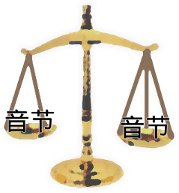Mandarin sentence structure: guidelines
Mandarin sentence structure is pretty complicated, but there are a few general pointers that make it easier to break down.
Apart from word order, the following points make useful guidelines: the “modifiers precede what they modify” rule, Mandarin’s topic-comment structure, balancing syllables, and “aspect not tense”.
Modifiers precede what they modify

This is a great rule to learn, as it applies pretty much everywhere in the Chinese language. Modern Mandarin and Classical Chinese both follow this rule.
Adjectives go before the nouns they modify and adverbs go before the verbs they modify. Mandarin often uses 的 to attach qualities to things, so it goes in between the modifier and the thing that’s been modified.
Some examples with modifiers highlighted in green:
那是小李的 书。 Nà shì Xiǎolǐ de shū. That is Xiaoli’s book.
那个很高的 男人匆匆地走了。 Nàge hěn gāo de nánrén cōngcōng de zǒule. The tall man left in a hurry.
我不喜欢大的 够。 Wǒ bù xǐhuan dà de gòu. I don’t like big dogs.
Note how in each case the modifier comes before the thing it’s modifying.
Mandarin sentence structure is topic-prominent

One of biggest differences between English and Mandarin sentence structure is that Mandarin is topic-prominent, whereas English is subject-prominent. This sounds complicated but is actually fairly straightforward.
The subject of a sentence is the person (or thing) that performs the action in the sentence. In the sentence “John likes cheese”, the subject is “John” as he is the one doing the liking. Saying that English is subject-prominent means that English prefers to put the subject first, obeying its SVO word order.
The topic of a sentence is a little less clear. It’s not a grammatical role like the subject, but the thing that the sentence appears to be about. It’s the most important item in the sentence.
Take the sentence “I’ve already done my homework” as an example. “I” is the subject, but the topic is “my homework”. The sentence isn’t really about the speaker, it’s about the homework.
Mandarin is topic-prominent as it often prefers to put the topic first, not the subject. So a speaker might say "作业我已经做完了" , literally “homework I’ve already done”.
This is a useful point to remember when constructing sentences in Mandarin. Put the most important thing first, which might not be the subject.
This is known as a “topic-comment” structure. First you give the topic of the sentence, then comment on it.
Some more examples with the topic highlighted in green:
袋子 有吗? Dàizi yǒu ma? Do you have a bag?
啤酒 我不太喜欢。 Píjiǔ wǒ bù tài xǐhuan. I don’t like beer that much.
美国 我没去过。 Měiguó wǒ méi qùguò. I haven’t been to America.
Balance the syllables

A big feature of Mandarin sentence structure is the rhythm: the syllables in a sentence should be balanced. The rhythm of a sentence is often described as being arranged into “feet”: groups of syllables.
Generally Mandarin prefers even numbers of syllables in a sentence, particularly grouped into chunks of two. There are countless possible rhythmic patterns, and some of these sound natural whilst some don’t.
This is very hard for learners to get the hang of, but it’s worth being aware of. The best approach is probably to do as much listening and reading as possible to get a feel for the rhythm of Mandarin.
Aspect not tense
Another general point about Mandarin is that it tends to be interested in aspect rather than tense. If you haven’t formally studied grammar before you might not know what these terms mean.
Tense is about time relative to when we’re speaking. It expresses whether something happened before now, is happening now, or will happen after the present moment. Aspect is about time relative to when the event occurred. It’s about whether or not an action was completed in the time frame we’re talking about.
Tenses are past, present and future. Aspects are things like perfective, continuous or imperfective. Again, if you haven’t studied grammar you may not know what terms like “perfective” and “imperfective” mean. If you speak a European language, though, you already know how to use them.
English verbs express aspect and tense. Consider the difference between “I ate”, “I was eating” and “I have eaten”. They are all past tense, but the aspect in each one is different. There are different levels of completeness. This is what aspect is about.
Mandarin tends to just express aspect. The main way it does this is with the aspect particle 了 (le). 了 grammar is pretty difficult, but just remember that it’s about aspect and not tense. 了 can appear in sentences about the past, present and future.
See also: Mandarin word order
Sources and further reading
- [Mandarin Chinese: A Functional Reference Grammar - Amazon](http://www.amazon.co.uk/gp/product/0520066103/ref=as_li_ss_tl?ie=UTF8&tag=easasistu-21&linkCode=as2&camp=1634&creative=19450&creativeASIN=0520066103" rel="external nofollow “Mandarin Chinese: A Functional Reference Grammar [Paperback]")
- Mandarin Chinese Sentence Structure – About.com
- Research in the Prosodic Structure of Mandarin - Ivan Chow, University of Toronto
- Rhythmic grouping, Tone sandhi and Stress in Beijing Mandarin - J Wang [PDF]
